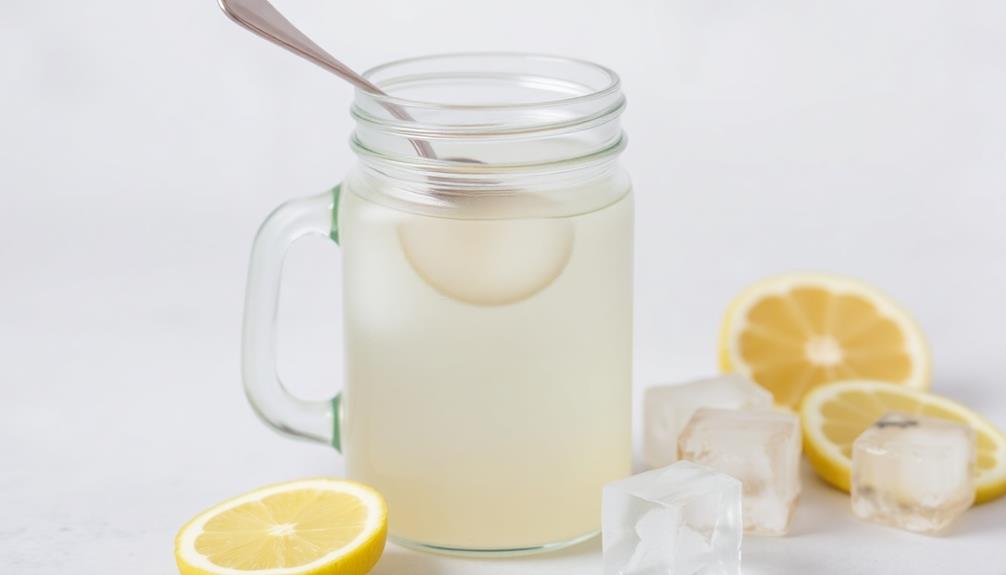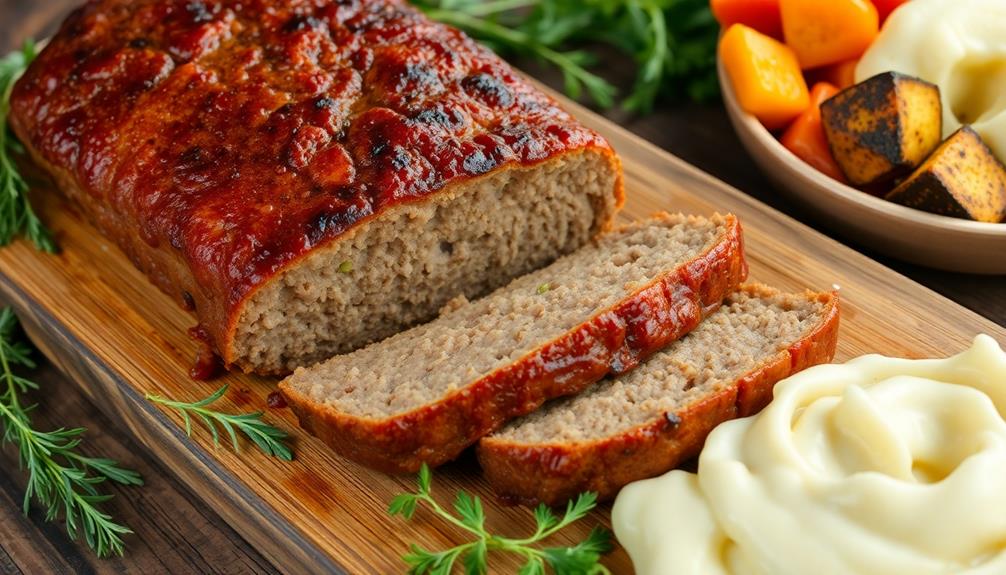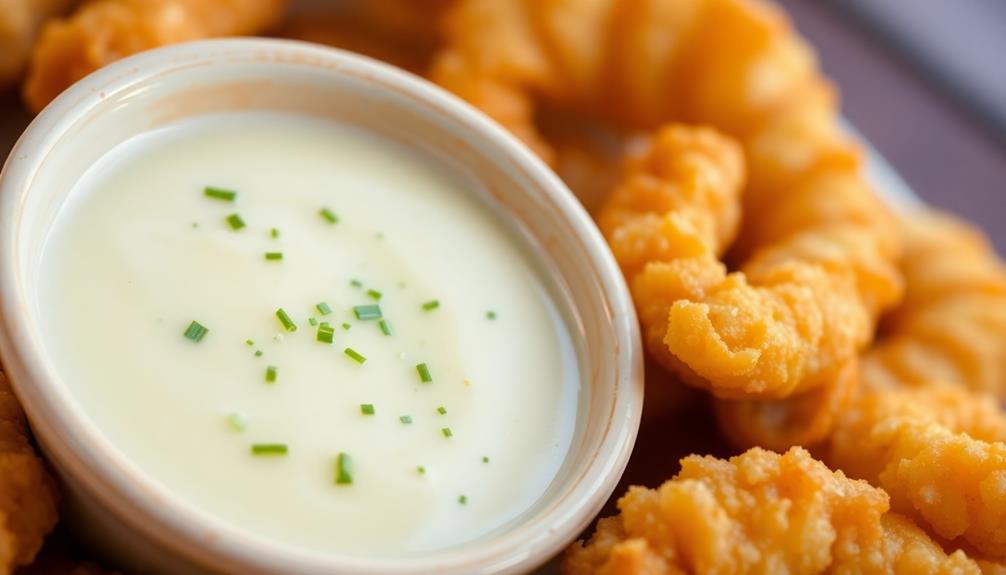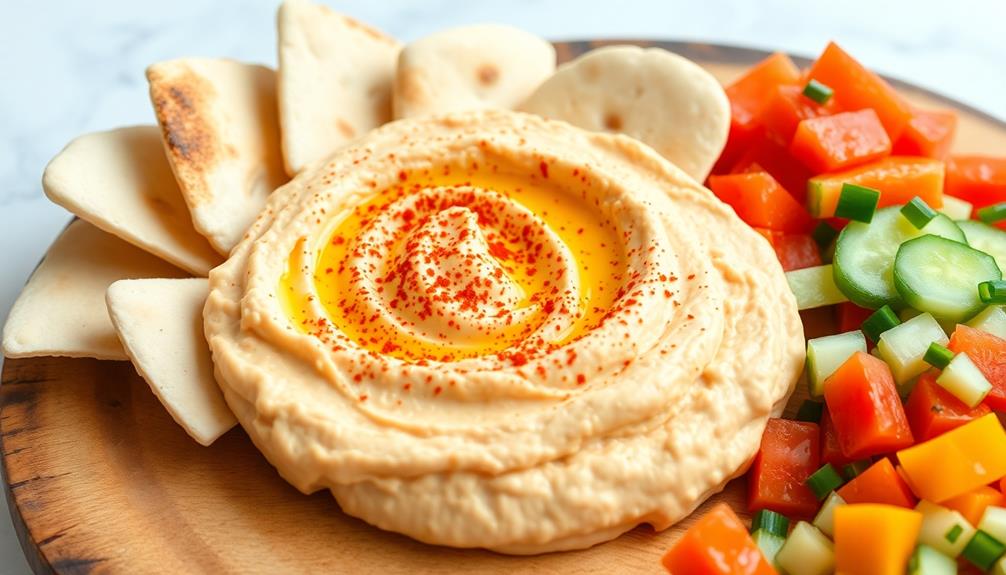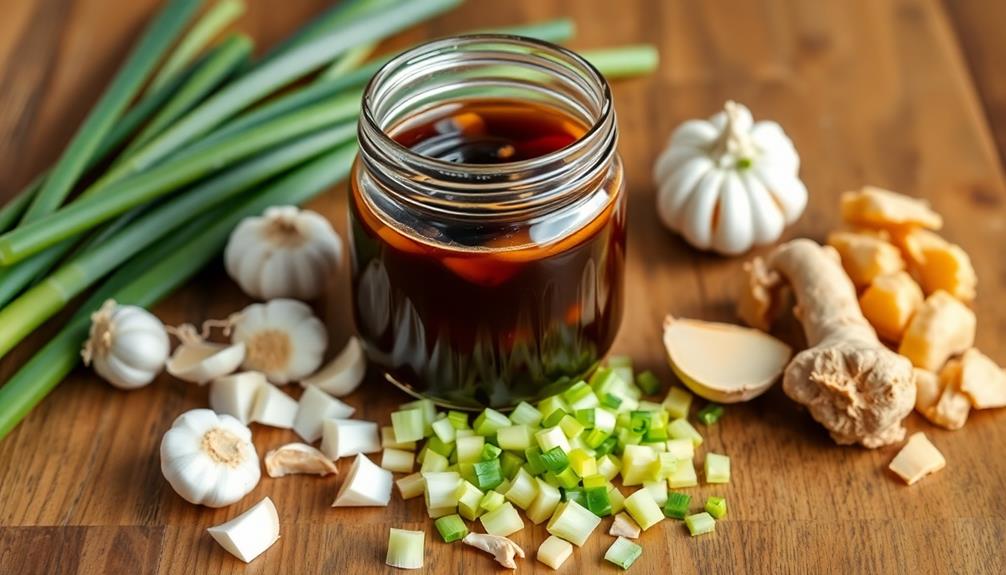Making simple syrup for cocktails is a breeze! This versatile sweetener originated centuries ago and remains a bartender's best friend. To make it, you'll just need equal parts sugar and water. Simply combine them in a saucepan, heat until the sugar dissolves completely, then let it cool. Strain out any impurities, store it in the fridge, and voila – you've got a key ingredient that can transform countless cocktails. The possibilities for flavor experimentation are endless, from herbal infusions to citrusy notes. With this basic recipe under your belt, you'll be mixing up professional-quality cocktails in no time.
Key Takeaways
- Make simple syrup by combining a 1:1 ratio of sugar and water in a saucepan, heating and stirring until the sugar fully dissolves.
- Avoid boiling the mixture to prevent caramelization, and let the syrup cool before straining and storing it in the refrigerator.
- Properly stored, simple syrup can last up to 2 weeks and is a versatile sweetener for cocktails, beverages, and desserts.
- Experiment with flavoring the simple syrup by infusing it with herbs, spices, or citrus zest for unique cocktail creations.
- Simple syrup is an essential ingredient in many classic cocktails, allowing for easy adjustments to sweetness levels and enhancing the overall cocktail experience.
History

When did simple syrup first come about? The history of this versatile sweetener can be traced back to the 17th century, when it was used in various culinary and medicinal applications.
Initially, simple syrup was a popular ingredient in early cocktails, often used to balance the flavors of spirits and mixers.
Over time, the recipe for simple syrup has remained relatively unchanged, consisting of just two ingredients: sugar and water.
The process of making it is straightforward, involving the gradual heating and dissolving of sugar in water until a smooth, syrupy consistency is achieved.
This basic formula has endured, as simple syrup continues to be a fundamental component in many modern cocktail recipes, from classic Manhattans to refreshing mojitos.
The simplicity and versatility of this sweetener have made it a staple in bartenders' arsenals, as well as a must-have for home mixologists looking to elevate their cocktail game.
Its timeless appeal is a testament to the enduring power of simple, well-executed recipes.
Recipe

Simple syrup is a versatile sweetener used in a variety of cocktails, beverages, and desserts.
It's incredibly easy to make at home with just two ingredients and takes only a few minutes to prepare.
The basic ratio for simple syrup is 1:1 sugar to water. This creates a medium-bodied syrup that's suitable for most applications. However, you can adjust the ratio to create a thinner or thicker syrup depending on your preferences.
Ingredients:
- 1 cup granulated sugar
- 1 cup water
Instructions:
In a small saucepan, combine the sugar and water.
Bring the mixture to a simmer over medium heat, stirring occasionally, until the sugar has completely dissolved.
Remove from heat and let cool completely before transferring to an airtight container.
Simple syrup can be stored in the refrigerator for up to 2 weeks.
It's important to note that simple syrup can be flavored with a variety of ingredients, such as herbs, spices, or citrus zest, to create unique and personalized syrups.
Experiment with different flavor combinations to suit your tastes.
Cooking Steps

To make simple syrup, you'll first need to combine sugar and water in a saucepan.
Gently heat the mixture, stirring constantly until the sugar has completely dissolved.
Once cooled, strain the syrup into a clean container and store it in the refrigerator for up to two weeks.
Step 1. Combine Sugar and Water, Heat Gently
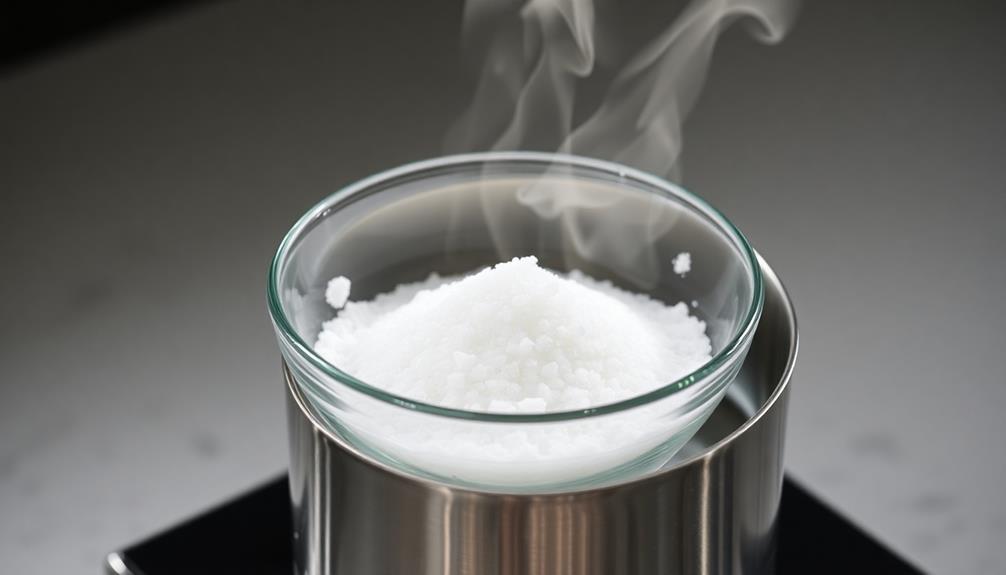
Pour the sugar and water into a small saucepan. Use a ratio of 1:1 – for example, 1 cup of sugar and 1 cup of water. This simple combination is the foundation for making simple syrup, a versatile sweetener used in cocktails, coffee, and various desserts.
Gently heat the mixture over medium heat, stirring occasionally, until the sugar has fully dissolved. Be careful not to let the mixture come to a rapid boil, as that can cause the sugar to caramelize and alter the flavor.
Instead, maintain a gentle simmer, allowing the sugar to gradually incorporate into the water.
Once the sugar has dissolved, remove the saucepan from the heat and let the simple syrup cool to room temperature. The cooling process will result in a smooth, pourable consistency.
Transfer the simple syrup to an airtight container and store it in the refrigerator for up to 2 weeks, ready to be used in your favorite drinks and recipes.
Step 2. Stir Until Sugar Completely Dissolves
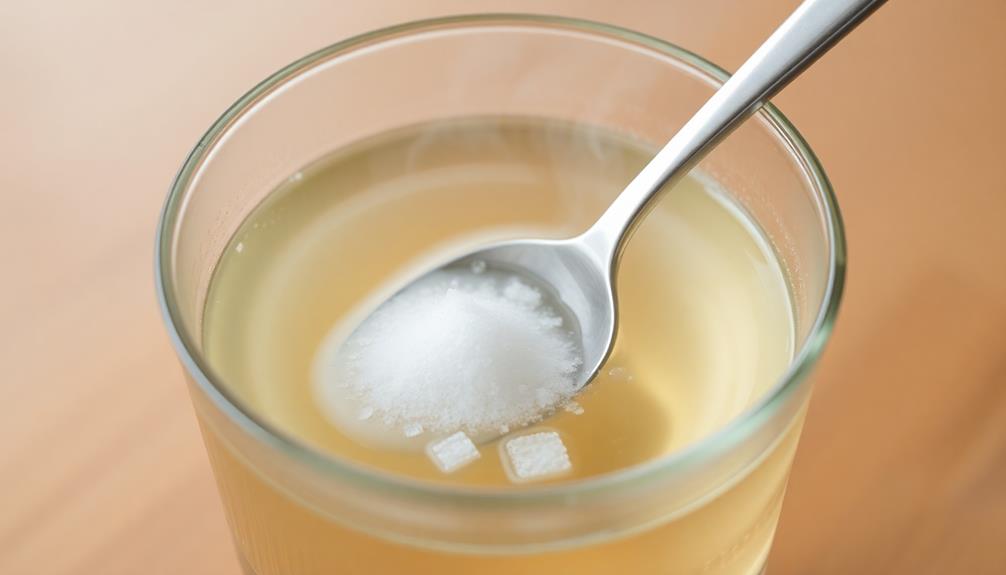
Once you've combined the sugar and water in the saucepan, gently stir the mixture over medium heat. This step is crucial in ensuring the sugar dissolves completely, creating a smooth and consistent simple syrup.
Stirring continuously is important, as it prevents the sugar from burning or caramelizing on the bottom of the pan. As the mixture heats, you'll notice the sugar granules gradually disappearing.
Keep stirring until the liquid becomes completely clear, with no visible sugar crystals. This typically takes around 5-10 minutes, depending on the quantity of ingredients and the intensity of the heat. Be sure to keep the heat at a medium level to avoid caramelization or burning. Once the liquid is clear, reduce the heat and allow it to cool slightly before incorporating it into your recipe. If you’re also looking for tips on how to whip cream quickly, use chilled cream and a cold bowl to speed up the process, achieving soft peaks in no time.
To test if the sugar has fully dissolved, dip a spoon into the liquid and run your finger across the back of the spoon. If you feel no grittiness, the sugar has dissolved.
Once this happens, remove the pan from the heat and allow the simple syrup to cool. The cooled syrup can then be transferred to a clean, airtight container and stored in the refrigerator for up to 2 weeks, ready to use in your favorite cocktails or other recipes.
Step 3. Let Stand Until Cooled
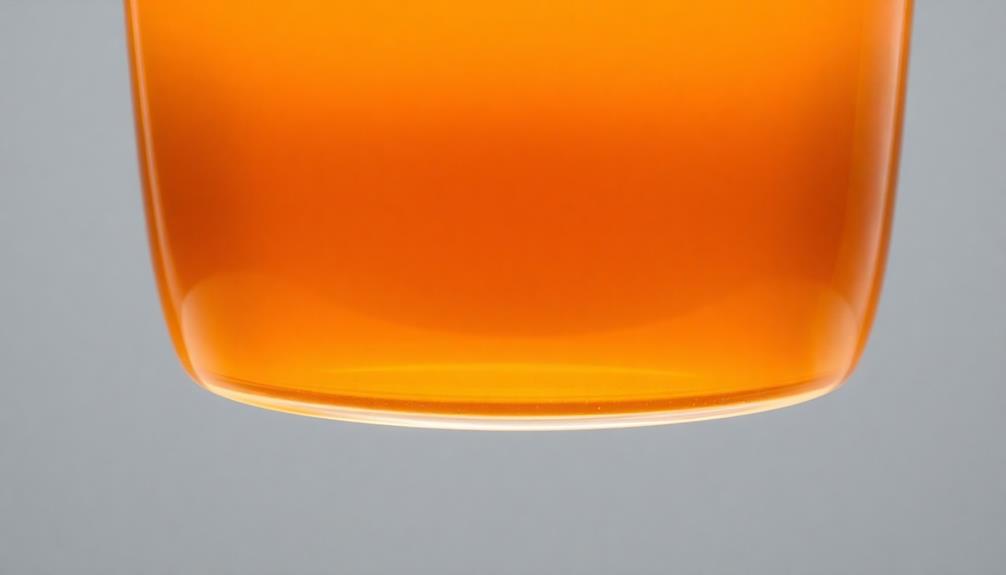
After the sugar has fully dissolved, remove the saucepan from the heat.
Allow the simple syrup to stand and cool completely, which typically takes around 30 minutes. This cooling period is crucial, as it allows the syrup to thicken to the desired consistency.
As the syrup cools, you may notice a few small sugar crystals forming on the surface. This is normal and nothing to be concerned about.
Once the syrup has reached room temperature, give it a gentle stir to incorporate any crystals back into the mixture.
For the best results, transfer the cooled simple syrup to an airtight container, such as a glass jar or bottle.
This will help preserve the syrup's freshness and prevent it from drying out. Properly stored, homemade simple syrup can last for up to 2 weeks in the refrigerator.
Step 4. Strain Into a Clean Container
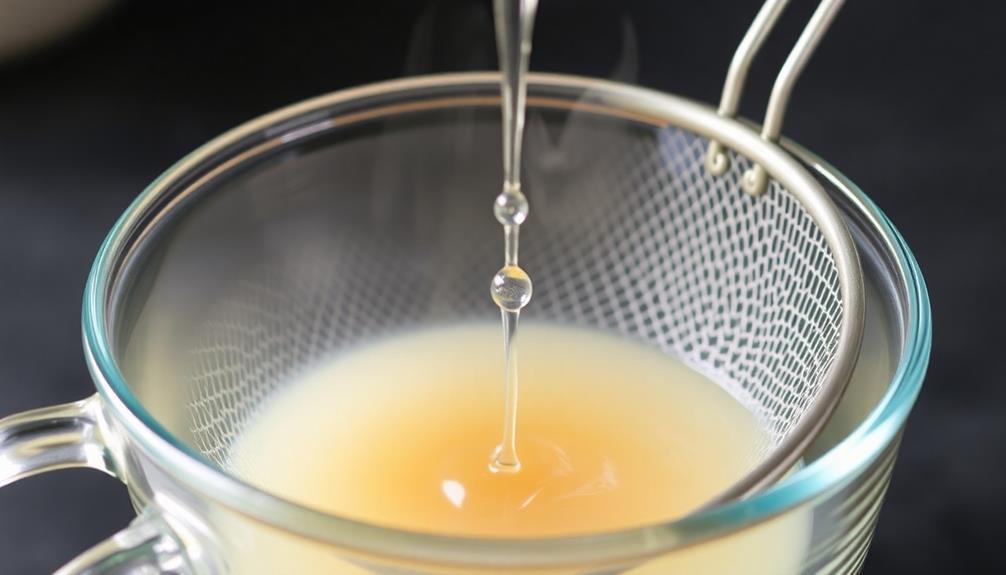
To finish the process, strain the cooled simple syrup through a fine-mesh sieve or cheesecloth into a clean container. This step ensures that any impurities or undissolved sugar crystals are removed, leaving you with a perfectly smooth and clear syrup.
When straining, be sure to use a container that's large enough to accommodate the volume of syrup. Gently pour the syrup through the sieve, taking care not to force it through too quickly, as this can cause the syrup to splash.
If using cheesecloth, you may need to gather the edges and squeeze the cloth to help the syrup pass through.
Once strained, transfer the simple syrup to an airtight container, such as a mason jar or bottle. This will help preserve the syrup's freshness and prevent it from absorbing any unwanted flavors or aromas.
The simple syrup can now be stored in the refrigerator for up to 2 weeks, ready to be used in your favorite cocktails or other recipes.
Step 5. Store in Refrigerator

Now that you've strained the simple syrup, you'll want to store it properly to keep it fresh. The key to maintaining the syrup's quality is to refrigerate it. This helps prevent bacterial growth and preserves the syrup's flavor and consistency.
Once the syrup has cooled, pour it into a clean, airtight container, such as a mason jar or a bottle with a tight-fitting lid. This will create a seal that locks in the freshness and prevents the syrup from absorbing any unwanted odors or flavors from the fridge.
When stored in the refrigerator, your simple syrup will typically last for up to two weeks. Be sure to check the container regularly for any signs of spoilage, such as mold or a change in color or texture. If the syrup seems off, it's best to discard it and make a fresh batch.
Refrigerating your simple syrup is a simple step that helps ensure you can enjoy its sweet goodness for days to come.
Final Thoughts

Making simple syrup is a straightforward process, and you've now learned the key steps. With a bit of practice, you'll be able to whip up a batch with ease, adding that sweet, rich flavor to all sorts of cocktails and beverages.
Additionally, just as local coffee roasters create unique flavors through their sourcing, you can infuse your simple syrup with distinctive ingredients, such as fresh herbs or spices, to enhance your cocktails. Remember to consider your ingredients' origins and sustainability, much like how brands prioritize ethical sourcing in eco-friendly brews.
Remember, the versatility of simple syrup is what makes it such a valuable tool in the kitchen. Whether you're mixing up a classic old fashioned, a refreshing mojito, or experimenting with your own unique concoctions, this syrup will be your go-to ingredient.
As you continue to explore the world of cocktails and mixology, don't hesitate to experiment with different flavors and variations of simple syrup. Try infusing it with herbs, spices, or even citrus zest to create custom syrups that truly elevate your drinks. You can also use these infused syrups in non-alcoholic beverages to add a creative twist to classic recipes. For instance, a rosemary or lavender-infused simple syrup can transform a batch of homemade lemonade for summer into a refreshing and sophisticated treat. The possibilities are endless, so let your imagination guide you as you craft unique and memorable drinks.
The possibilities are endless, so have fun and let your creativity shine.
Frequently Asked Questions
How Long Does Simple Syrup Last in the Fridge?
Your homemade simple syrup can last up to 2 weeks in the fridge when stored properly in an airtight container. Be sure to check for any signs of mold or discoloration before using it in your cocktails.
Can I Use Brown Sugar Instead of White Sugar?
You can certainly use brown sugar instead of white sugar to make simple syrup. The resulting syrup will have a slightly deeper, more complex flavor profile. Just be mindful that brown sugar has a lower dissolving point than white sugar. Additionally, the syrup will take on a darker color due to the molasses content in brown sugar. If you ever find yourself without brown sugar on hand, you can easily make homemade brown sugar by combining white sugar with molasses—about one tablespoon of molasses per cup of sugar usually does the trick. This DIY method gives you flexibility and control over the sweetness and flavor profile of your syrup, depending on how much molasses you incorporate.
Do I Need to Sterilize the Storage Container?
You don't necessarily need to sterilize the storage container, but it's a good idea. Sterilizing helps prevent bacterial growth and ensures your simple syrup stays fresh for longer. Just give the container a thorough wash and let it air dry.
Can I Add Flavors to the Simple Syrup?
Absolutely! You can easily add flavors to your simple syrup. Simply infuse the syrup with fruits, herbs, spices, or other ingredients to create unique and delicious variations for your cocktails.
How Much Simple Syrup Should I Use in a Cocktail?
When making cocktails, the amount of simple syrup you use can vary depending on the other ingredients and your personal taste preferences. Start with a small amount, like 1/4 to 1/2 ounce, and adjust to balance the flavors.
